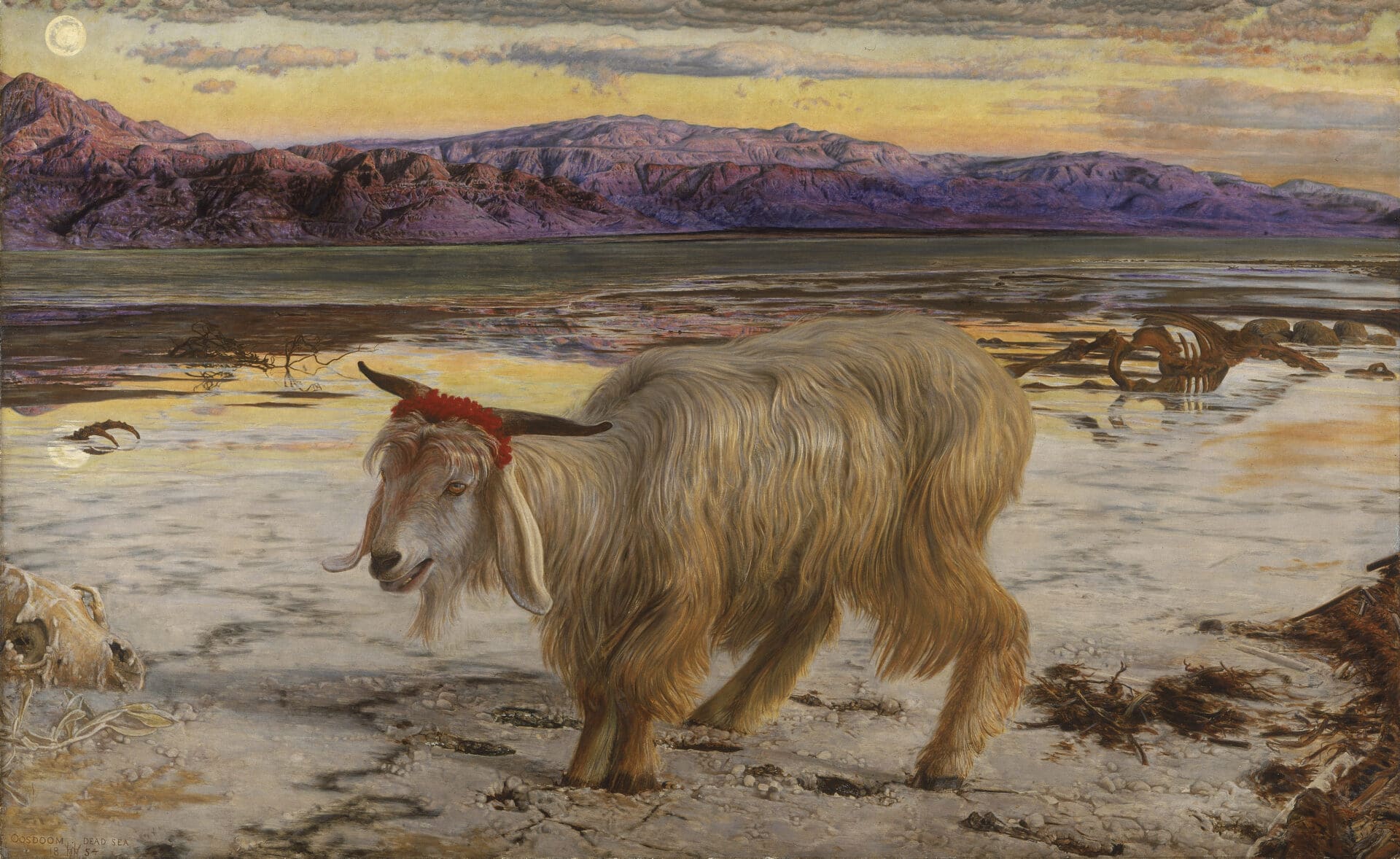One of the central themes of Exodus is the establishment of the sacrificial system in the Tabernacle, or Tent of Meeting. God establishes the liturgical rites of worship in the Tabernacle primarily through the priest performing animal sacrifices. The animal becomes the blood-offering substitute to suffer and die for the sins of the Israelites. The animal is used to bring atonement for the sins of the Israelites. Of course, these are only type and foreshadow. God is teaching the Israelites by way of object lessons that ultimately he would send his Son as the one and true sacrifice to take away the sins of the world. All of the sacrifices of Exodus, the Tabernacle, the Temple, and indeed, the whole Old Testament are meant to prepare the world for the arrival of God’s Son in the Incarnation, and ultimately, his crucifixion.
This is why God instructs Moses that the animal sacrifices must be without blemish, as Christ is perfect and without sin. Only the unblemished offering will be accepted by God to take away the sins of the Israelites. In Exodus, God establishes the Levitical language so common to us now, of redemptive atonement through substitution and sacrifice by a priest in a liturgical rite. The liturgical animal sacrifices and bread and wine offerings established in Exodus are just prefigurements to the liturgy and sacrifice of the Catholic Mass to come.
The backbone of the whole Jewish sacrificial system is the daily burnt offering. This is when the Levitical priests offer two lambs each day—a morning offering and an evening offering. The morning offering is sacrificed precisely at the “third hour,” or nine o’clock in the morning. The evening offering is sacrificed about the “ninth hour,” or at about three o’clock in the afternoon. This schedule of sacrifices matches the exact span of time—six hours—of Christ’s crucifixion on the Cross. St. Mark mentions this specifically, saying, “And it was the third hour, when they crucified him” (Mark 15:25). Then, we read, “at the ninth hour” (Mark 15:34) Jesus “breathed his last” (Mark 15:37). Christ’s death on the Cross is a perfect fulfillment of the daily burnt offering of the two lambs, even down to the precise hours of the day.
Christ fulfills all of the other sacrificial typologies as well. There is the sacrifice of the Yahweh and Azazel goats on the Day of Atonement, the holiest day in the Jewish liturgical calendar. The sins of the nation are transposed on to the goat solely by the High Priest, who banishes the sins by sending the goat into the desert. In Leviticus, we read, “The goat shall bear all their iniquities upon him” (Leviticus 16:22). Christ is the High Priest who offers himself up as sacrifice bearing the sins of the world. As the Letter to the Hebrews states, “Christ appeared as a High Priest…he entered once for all into the Holy Place, taking not the blood of goats and calves but his own blood, thus securing an eternal redemption” (Hebrews 9:11-12). The crucifixion and death of our Lord Jesus Christ is the ultimate fulfillment to the Day of Atonement, and all of the sacrificial prefigurements established in Exodus.
Follow along as Brian Kranick shows how the miraculous in Exodus becomes the supernatural & sacramental in the New Covenant and the Catholic Church:
- Part I: From Exodus to Easter – Old Testament Typologies Reveal New Testament Realities
- Part II: From Exodus to Easter – Jesus, The New Moses
- Part III: From Exodus to Easter – The New Joshua
- Part IV: From Exodus to Easter – The Passover Lamb
- Part V: From Exodus to Easter – Baptism and the Waters of Exodus
- Part VI: From Exodus to Easter – The Manna, the Quail, and the Bread of Life
Brian Kranick is the author of Burning Bush, Burning Hearts: Exodus as Paradigm of the Gospel. He has a master’s degree in Systematic Theology from Christendom College and writes about theological issues at sacramentallife.com. He resides with his family in the Pacific Northwest.
Image Source: AB/Wikipedia William Holman Hunt: The Scapegoat, 1854.



